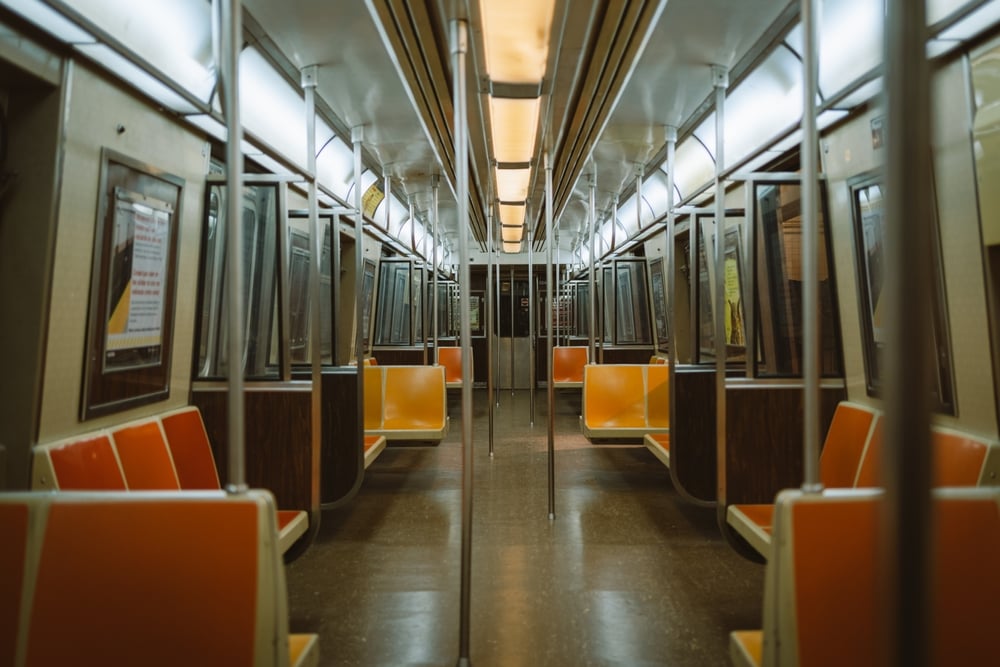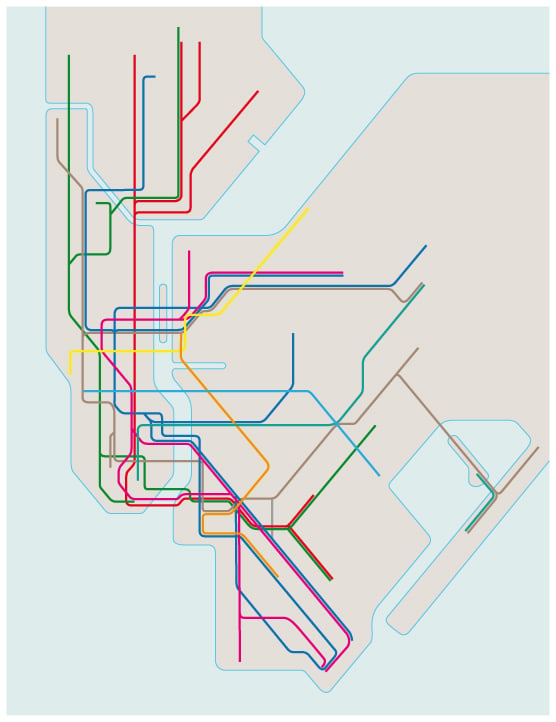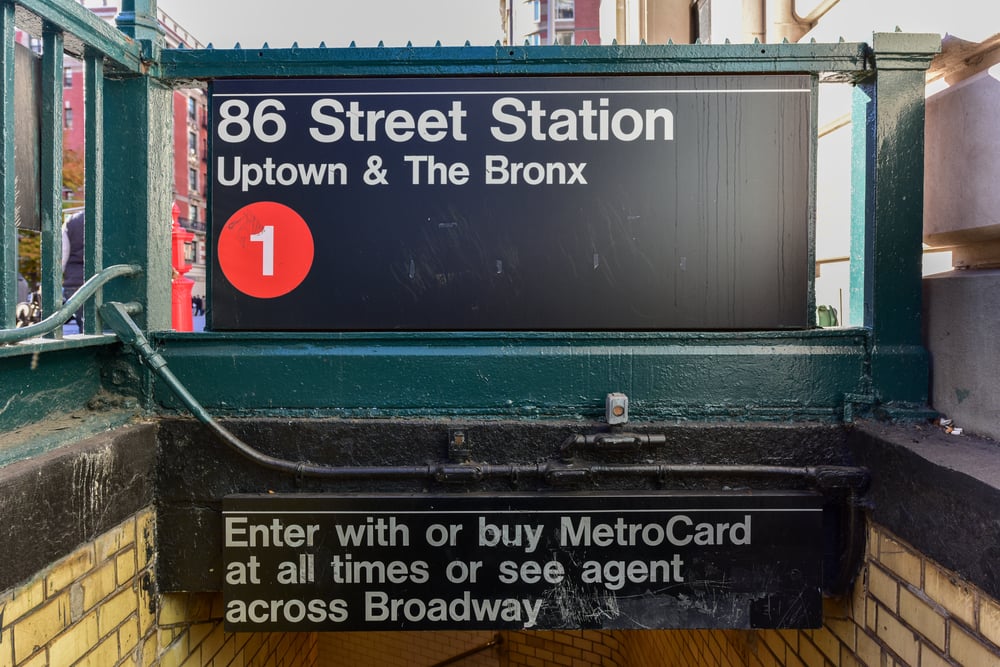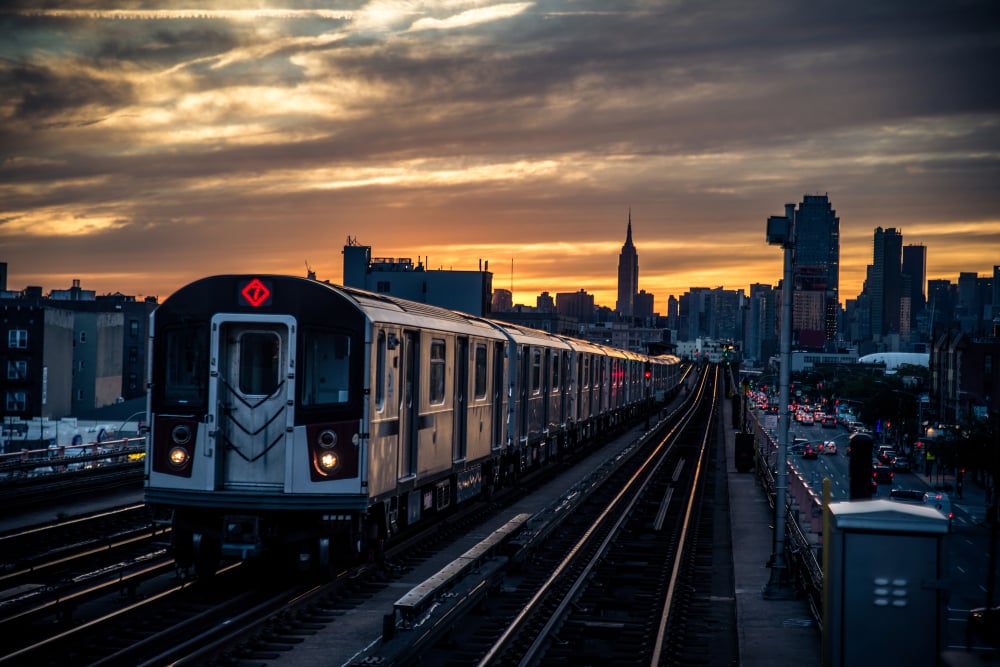Using the New York City Subway is the quickest way to get around the city, and I have incorporated it in both of my 5-day and 1-day New York City itineraries. However, I know that the subway can look daunting and overwhelming due to the number of lines and stations it has. The good thing is that the more you use it, the easier it will be to understand and navigate. Whether you are visiting New York City or have just moved there, here are essential tips and a quick guide to help you learn how the city’s subway system works.
Introduction
Fast Facts
- The NYC Subway is operated by the MTA (Metropolitan Transportation Authority), North America’s largest transportation network. It serves the population across New York City, Long Island, southeastern New York State, and parts of Connecticut.
- The NYC Subway is the world’s largest by number of stations, with 472 stations across 28 main routes, including shuttle services.
- The 28 main routes run along 36 different lines, which are the physical railroad tracks/series of tracks.
- The NYC Subway operates 24 hours a day, 365 days per year, something not found in other subway systems throughout the world.
- The NYC Subway is one of the most-used subway systems in the world, with about 1.15 billion annual paid rides in 2023.
- As of 2023, the average weekday ridership was around 3.6 million people.
- Times Square is consistently the busiest station, while Broad Channel in Queens is the least used.
- The deepest station is 191st Street in Washington Heights in Manhattan, about 173 to 180 feet (53 to 55 meters) below street level.
- The highest station is at Smith and 9th Street in Brooklyn, 88 feet (28.6 meters) above street level.
- Only around 77 stations have public restrooms.
- The subway has an impressive collection of art, with over 300 works scattered throughout the stations and tunnels, including mosaics and sculptures.
Quick History
The New York City Subway is one of the world’s oldest public transit systems, with the first underground line opening on October 27, 1904. However, elevated train lines in the city existed earlier, with the first operation dating back to October 9, 1863. As I have stated before, the NYC Subway is famous for running 24 hours a day, 7 days a week. It has only shut down completely a handful of times in its history, notably during the September 11th attacks in 2001 and Hurricane Sandy in 2012.
The NYC Subway connects Manhattan, Queens, Brooklyn, and the Bronx (Staten Island is not connected by subway). It has 245 miles (394 km) of routes and 691 miles (1112 km) of railway tracks. Approximately 60% of the tracks are underground, while 40% are above ground.

Accessibility
The NYC Subway is working to improve its accessibility, but it still has a long way to go. As of January 2025, 152 out of all 472 stations are accessible to some extent. The MTA is committed to significantly increasing accessibility; their goal is to make 95% of the subway system fully ADA-compliant by 2055. The primary reason for the low number of accessible stations is that the system was largely built in the early 1900s, long before the Americans with Disabilities Act (ADA) was passed in 1990.
Subway Guide and Tips
Local vs Express Trains
To efficiently serve its 472 stations, the NYC subway system operates both local and express trains, with some routes offering a mix of both. These service variations often depend on the time of day, direction of travel, and whether it’s a weekday, weekend, or late night. Below is a general overview of how the lines operate during daytime weekday service.
Local trains stop at every station along their route. Express trains skip certain stations to provide faster service. Many lines share tracks; often, the outer tracks are for local trains, and the inner tracks are for express trains. You will see outer and inner tracks at several stations while riding the subway.
On NYC subway maps and the front of the trains, a train number or letter displayed within a circle indicates local service, meaning the train makes all stops on its route. A train number or letter within a diamond indicates express service, meaning the train skips certain local stops to provide faster travel between key stations.
For a clear understanding of subway line operations, here’s a breakdown indicating local, express, or combined train service. The name in parentheses indicates the official name of the subway line.
Numbered Subway Lines
1 Train: Local (Broadway-Seventh Avenue Local). Makes all stops along its entire route.
2 Train: Express (Seventh Avenue Express). Runs express in Manhattan (south of 96th Street) and local elsewhere (The Bronx, Brooklyn).
3 Train: Express (Seventh Avenue Express). Runs express in Manhattan (south of 96th Street) and local in Brooklyn.
4 Train: Express (Lexington Avenue Express). Runs express in Manhattan and local in the Bronx and Brooklyn.
5 Train: Express (Lexington Avenue Express). Primarily express in Manhattan, with varying local/express service in the Bronx depending on the time of day and destination (e.g., some peak hour trains run express to/from certain Bronx terminals).
6 Train:
Local (6 in a circle; Lexington Avenue Local). Makes all stops in Manhattan and the Bronx.
Express (6 in a diamond): Operates as an express service in the Bronx, skipping several local stops.
7 Train:
Local (7 in a circle): Makes all stops between Manhattan and Queens.
Express (7 in a diamond): Operates during peak hours in the peak direction, running express between Queensboro Plaza and Mets-Willets Point in Queens, and local elsewhere.
Lettered Subway Lines
A Train: Express (Eighth Avenue Express). Generally runs express in Manhattan (from 59th St-Columbus Circle to Canal St, and often further south) and Brooklyn, though it can run local in northern Manhattan (above 168th St) and southern Queens/Rockaways depending on the time of day.
B Train: Local/Express Mix (Sixth Avenue Express / Central Park West Local). Runs express on the Sixth Avenue Line in Manhattan (between 145th St and 34th St-Herald Sq), but is local on the Central Park West Line (from 145th St to 59th St-Columbus Circle) and in Brooklyn. Only operates weekdays.
C Train: Local (Eighth Avenue Local). Makes all stops along its route in Manhattan and Brooklyn.
D Train: Express (Sixth Avenue Express). It generally runs express in Manhattan and the Bronx, and local in Brooklyn.
E Train: Local/Express Mix. Runs local on the Eighth Avenue Line in Manhattan, but is express on the Queens Boulevard Line in Queens.
F Train: Local (Sixth Avenue Local). Makes all stops in Manhattan, Brooklyn, and Queens.
G Train: Local (Brooklyn-Queens Crosstown Local). This train makes all stops. This is the only line that does not enter Manhattan.
J Train: Local (Nassau Street Local). This train makes all stops.
L Train: Local (14th Street-Canarsie Local). Makes all stops along its entire route.
M Train: Local (Queens Boulevard Local / Sixth Avenue Local / Myrtle Avenue Local). This train makes all stops.
N Train: Express/Local Mix. Runs express on the Broadway Line in Manhattan and in parts of Brooklyn (e.g., during weekdays on 4th Avenue). It runs locally in other parts of Brooklyn and in Queens.
Q Train: Express/Local Mix. Runs express on the Broadway Line in Manhattan. Runs locally in Brooklyn.
R Train: Local (Queens Boulevard Local / Broadway Local / Fourth Avenue Local). This train makes all stops.
W Train: Local (Broadway Local). This train makes all stops. Only operates on weekdays.
Z Train: The Z train provides express service alongside the J train during rush hours in the peak direction only. When the Z runs, the J runs locally on those shared segments.
Shuttle Services (S)
42nd Street Shuttle (S): Runs local between Times Square and Grand Central Terminal in Manhattan
Franklin Avenue Shuttle (S): Runs local in Brooklyn.
Rockaway Park Shuttle (S): Runs local in Queens.

Important Considerations
Service Changes: This list reflects typical weekday daytime service. Weekend, overnight, and rush hour patterns can be significantly different due to maintenance, track work, and changing demand. Always check the MTA official website, app, or station signs for the most up-to-date service advisories.
Bullet Shapes: I stated above for some train lines that some trains might have a diamond or circle around the train number. However, modern signs often just indicate the train and its destination.
Station Dots: On the official subway map, stations with a white circle indicate that both local and express trains stop there. Stations with a black circle indicate that only local trains stop there.
When is Rush Hour?
Rush hour on the NYC subway generally occurs between 6:30am to 9:30am in the morning and 3:30pm to 8pm in the evening during the week. This is when you will see the large crowds on trains, both locals and tourists.
Peak times when the trains are even more crowded are between 7:00am and 9:00am and between 4:30pm to 7:00pm.
What are Late Nights?
When on a subway platform or walking through the subway, you will see signs that say something like “Late Nights take 2 to Times Sq-42 St for 3.” In New York City, subway trains generally transition to running local at night, typically starting around 10pm to midnight. The official “late night” service period for the NYC subway is usually from 12:00am (midnight) to 6:30pm daily. During this time, many express trains convert to local service.
While midnight is the official start of late-night service, some changes and lines may begin running local as early as 8pm or 10pm, especially if there’s construction being done on the express tracks. The shift to local service at night is primarily due to reduced passenger demand and to allow for track maintenance and repairs on express lines when they are less busy.
Remember: The exact timing can vary by line and even by day. As I’ve written above, some lines like the C train are always local, while others like the A or D may switch from express to local at night.

How to Confirm Service Changes
The most reliable way to check for specific service changes and timetables is by checking the official MTA website here or their mobile app. They provide real-time service alerts and schedules.
You will also see digital signs on the subway platforms that will usually indicate whether the next train is local or express. Additionally, the MTA has a “Late Night Subway Diagram” on its website that shows how the system operates overnight.
Conclusions
While the New York City Subway can look confusing at first, it becomes easier to understand the more you use it. I hope this guide takes the stress out of the NYC subway, helping you feel confident as you explore the city! If you get lost or feel confused when at a subway station and need assistance, seek out an MTA employee, a patrolling police officer, or a fellow commuter. They can help you get back on track.

